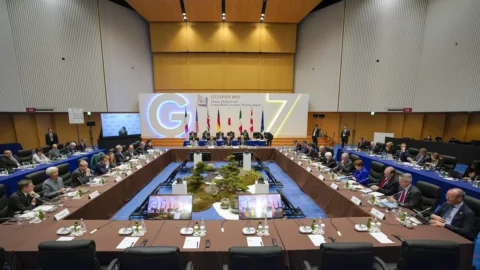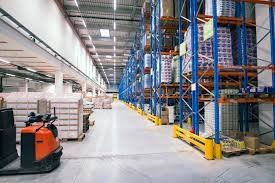Since the last many years, India’s air cargo industry has established its worth internationally and also witnessed a great transformation in terms of infrastructure and throughput capacity—from world-class airports with state-of-the-art cargo hubs and handling capabilities, storage and transportation facilities, excellent turnaround time and performance made possible with the best of automation and technologies in place—the sector is now considered capable of acting as a force multiplier in making India’s vision of a US$5 trillion economy further possible. Even during the pandemic which wrought massive devastation across the nation both from a humanitarian and economic standpoint, the domestic air cargo sector emerged as a success story as it facilitated the uninterrupted supply of goods and essential commodities countrywide and across continents.
Ritika Arora Bhola
Predictions: 2022 and beyond
It seems the Indian air cargo industry is taking great strides at the moment, mostly benefitted by the efficient and ambitious initiatives and schemes launched by the government in the last few years.
While other industries were on standstill during the pandemic, Indian air cargo gained momentum and the cargo business proved to be a great contributor towards revenue generation for the domestic aviation sector.
According to the WorldACD air cargo rankings, the number of freighters being operated by Indian carriers has increased from 5 as of March 2020 to 25 as of today, and the share of cargo carried into and out of India by sovereign flag carriers has increased from 2 per cent to 19 per cent. And for the first time, an Indian flag carrier has broken into the top ten carriers of cargo from India.
Also, Indian government’s recent initiative of withdrawing the unrestricted ‘Open Skies Policy’ to promote Indian carriers has commendably assisted the industry’s growth.
Another initiative, Krishi Udan has connected Indian farmers from regions with sporadic and problematic road and rail connectivity, thereby lengthening transit times, to the main consumption centres of India through air cargo.
The Ministry of Civil Aviation’s Incentive Scheme has also benefited the shippers, farmers, and the regional airports. This has utmost helped the domestic air cargo industry grow and establish itself as a feasible mode of transport of perishable commodities.
Further propelling the growth, the National Air Cargo Policy 2019 (NACP) also rightly proposes to capitalise on the advantage of India, from a geographic point of view, of being positioned between the manufacturing hubs to the east and south east of Asia, and with the consumption centres in Europe and the Americas, by highlighting the creation of transportation hubs at all major Indian airports in the run up to 2025.
Observing the above, it would be apt to say that Indian air cargo industry is moving in the right direction and is ready to achieve the pre-COVID-19 growth levels in the coming years.
“Undoubtedly, the cargo business has been a great contributor towards revenue generation for the Indian aviation industry during the pandemic,” says William Boulter, Chief Commercial Officer at IndiGo.
Talking about IndiGo’s operations, Boulter states, “We also had to adapt ourselves to the fast evolving business environment during the pandemic. By using the aircraft cabin (with minor changes) as well as belly space, we have been able to carry significant payloads on our passenger aircraft as ‘CarGo charters’. For the fiscal year 2021, our cargo revenue increased by 9.6 per cent compared to the previous year, even though our normal belly space from passenger operations was absent for a couple of months, and at a much reduced level for the remainder of the year. This has really supported us during this pandemic period when our operations have been severely impacted. We have flown over 6500 ‘cargo-in-cabin’ charters since April 2020 and these have made a positive contribution to our cashflow when passenger services were at a thin level.”
Further, highlighting their growth, the global air cargo expert added that IndiGo has initiated a freighter programme and is in the process of sourcing four A321CEO aircraft.
“The A321P2F—Passenger-to-Freighter conversion is the most efficient narrow-bodied freighter available, offering 24 container positions and supporting a payload of up to 27 tonnes. The delivery of our first freighter is expected in first half of CY2022. Our investment in the Freighter Programme will help strengthen our product and services in the segment, and not only accelerate our own business recovery but will also be a strong engine of economic growth for the country.”
“Looking at the current pace and scenario, we do see potential in the cargo business, which will remain one of the key revenue generators for all the airlines and continue to contribute to economic growth in India,” suggests Boulter.
“Domestic cargo has certainly proven itself to be a key revenue generator for Indian airlines in the chaos and duress of a global pandemic,” veteran freight forwarder Cyrus Katgara, Partner, Jeena & Company also feels.
However, Katgara says that growth is still relatively low as compared to pre-COVID-19 times.
“At present, we are doing 15-17 per cent lesser volumes compared to the pre-COVID 19 levels, however now the stage is set for domestic air cargo to grow.”
Keku Bomi Gazder, CEO of AAI Cargo Logistics and Allied Services Company (AAICLAS)—a fully owned subsidiary of Airports Authority of India (AAI) says, “We are seeing green shoots across the air cargo industry. The domestic cargo throughput has reached close to pre-pandemic levels but we need measures to sustain these levels.”
Gazder informs that he is working with the industry to work out ways to remove bottlenecks and hurdles to make the industry attractive and shift more cargo from other modes of transport to air.
“We work alongside the larger industry to ensure needs and wants of the industry is listened to, addressed and resolved. Most of domestic cargo moves through the large metro airports at present. However, we are now seeing a shift to that phenomenon, which is being driven by the pandemic. Tier II and III cities now account for a large chunk of the business, thanks to e-commerce and door-to-door supply.”
“At AAICLAS, we are fortunate to have the responsibility to manage and operate these cargo terminals. What we did during the vaccine movement was an eye opener. A lot of bottlenecks got removed and funds allocated to be deployed for building cool chain assets got deployed in creating better basic infrastructure. We feel these numbers are sustainable and will move only northwards. Furthermore, the government at centre is coming up with various schemes to stimulate growth and facilitate freight.”
Triumph over hurdles
Despite various uncertainties and challenges of what lies ahead—like capacity crunch, high fuel costs, and multimodal connectivity issues, the air cargo sector recorded modest yet impressive growth. The industry saw growth opportunities in innovation and digitalisation and readily moved towards it. The domestic air cargo stakeholders worked 24×7 to ensure the continuity of supply chains and logistics operations, proving that even disastrous crises are never meant to stop them to achieve their goals.
At present, the domestic industry is poised for fast growth, influenced by the current demand and supply scenario but challenges like inadequacies in gateway and hinterland connectivity through rail, road for air freight; skyrocketing jet fuel prices; higher GST slabs makes it uncompetitive if compared to road and other modes of transport; inadequate infrastructure in tier II airports still looms large, as Katgara points out.
Suraj Agarwal, Director at Monopoly Carriers agrees. “The biggest challenge is the lack of required infrastructure to meet the growth. Higher prices of terminal and freight are also a matter of concern and 18 per cent GST is adding to the woes,” he adds.
Boulter emphasises it is vital that facilities at cargo terminals need to be further improved in relation to space available, also terminal charges need to be reduced to boost domestic cargo.
“We also believe that while many of us are adopting digitisation to greater levels, an increased utilisation of other evolving technologies will further help in reducing dwell times, while lowering the overall costs, thereby increasing efficiency,” he mentions.
“Domestic transportation of cargo is extremely cost-driven. Another challenge for air cargo is from the road and rail operators. We at the air cargo industry are working with the government to attract cargo from other modes to air. This will help to ensure producers and consumers of goods do not lose value during transportation,” Gazder reveals.
Taking a favourable perspective on initiatives, Gazder says, “As an example, the Government of India’s Krishi Udan Scheme saw success amongst farm producers transporting their goods to buyers who were willing to pay a premium. We did routes like Guwahati – Delhi – London. Imagine the yields that a farmer who sold his produce at a 250 kms radius now selling halfway around the word. It is therefore of paramount importance to bring key stakeholders together and address their needs whilst working on a lean cost structure.”
According to the data released by the Department for Promotion of Industry and Internal Trade (DPIIT), India’s air cargo industry is expected to witness Rs 35,000 crore (US$4.99 billion) investment in the next four years. The Indian Government is planning to invest US$1.83 billion for development of airport infrastructure along with aviation navigation services by 2026.
Interesting developments in India’s recent aviation and air cargo industry
- On December 21, 2020, IndiGo announced that it has collaborated with Urban Drive car rental company to offer self-driven and chauffeur driver services across 60 Indian cities.
- In October 2020, Zurich Airport International signed the concession agreement for the development of Jewar Airport on the outskirts of Delhi. The agreement has granted Zurich Airport International the licence to design, build and operate Noida International Airport (NIAL) for the next 40 years.
- In October 2020, the Airports Authority of India (AAI) announced plan to upgrade runways at seven airports across the country by March 2022.
- In January 2020, IndiGo became first Indian carrier to have an aircraft fleet size of 250 planes and became the first airline to operate 1,500 flights per day.
- On January 19, 2021, the Airport Authority of India (AAI) signed a concession agreement with Adani Group for three airports—Jaipur, Guwahati and Thiruvananthapuram. The concession period is 50 years from the date of commercial operations.
- On February 25, 2021, the Airports Authority of India (AAI) issued tenders for construction of the first phase of an international airport at Dholera in Gujarat, entailing an investment of Rs. 987 crore (US$135.07 million). The new facility is being set up in Greenfield city under the Delhi–Mumbai Industrial Corridor (DMIC) project at Dholera.
- On March 25, 2021, Union Minister of Civil Aviation Hardeep Singh Puri inaugurated the Kurnool Airport, Orvakal, Andhra Pradesh, in a virtual ceremony. The flight operations at Kurnool airport will commence on March 28, 2021 under the Regional Connectivity Scheme – Ude Desh Ka Aam Nagrik (RCS-UDAN).
- In March 2021, the government submitted a proposal to develop a water aerodrome project at the Ujjani Dam, under the Ministry of Civil Aviation’s UDAN-RCS (regional connectivity scheme).
- In March 2021, the government announced plan to set up two water aerodromes in Assam and four water aerodromes in Andaman & Nicobar Islands this year to boost tourism and connectivity.
- In March 2021, the Indira Gandhi International (IGI) Airport in Delhi announced a key expansion project to increase its passenger handling capacity. The expansion project includes a new terminal, advanced facilities, an additional runway and improved capacity to handle more passengers.
- In April 2021, Boeing, an aircraft manufacturer, announced that it has partnered with the Indian Aviation Academy (IAA) and the University of Southern California (USC) to conduct safety management system training sessions for all stakeholders in the domestic aviation industry.
- In June 2021, SpiceJet announced its ambitious target to fly 100 million domestic passengers on Sustainable Aviation Fuel (SAF) blend by 2030 under the aegis of World Economic Forum (WEF).
- AAI plans to invest Rs 25,000 crore (US$3.58 billion) in next the five years to augment facilities and infrastructure at airports.
- An UK business group is set to invest Rs 950 crore (US$135.9 million) in Hyderabad-based Turbo Aviation’s new airline TruStar.
Major initiatives undertaken by the government
- In February 2019, the Government of India sanctioned the development of a new greenfield airport in Hirasar, Gujarat, with an estimated investment of Rs. 1,405 crore (US$ 194.73 million).
- Under Union Budget 2021-22, the Indian government expanded the scope for ‘KrishiUdaan’ in convergence with Operation Green Scheme, wherein air freight subsidy of 50% for agri-perishables would be provided to North East states and 4 Himalayan states/UTs. The expansion of product-coverage will boost the ‘Krishi Udan’ scheme and improve air cargo transportation from these states.
- Under Union Budget 2021-22, the government lowered the custom duty from 2.5% to 0% on components or parts, including engines, for manufacturing of aircraft by public sector units of the Ministry of Defence.
- In September 2020, the Government of India sanctioned Rs. 108 crore (US $ 14.73 million) for Jagdalpur, Ambikapur, and Bilaspur airports in Chhattisgarh under the UDAN scheme for upgrade and development.
- The government is planning to start 14 more water aerodromes across the country, after the successful launch of seaplane service by Prime Minister Narendra Modi, between the Statue of Unity near Kevadiya in Gujarat’s Narmada district and Sabarmati Riverfront in Ahmedabad in October 2020.
- The Airport Authority of India plans to abolish royalty and offer steep discounts in lease rent to encourage MRO units to set up facilities at its airports.
- In March 2021, on the launch of the ‘Azadi Ka Amrit Mahotsav (India@75)’ by the Government of India, the Ministry of Civil Aviation (MoCA) has proposed 392 routes under the UDAN 4.1 bidding process.
- On May 08, 2021, AAI commenced commercial operations at Rupsi airport—Northeast India’s 15th airport and Assam’s 7th airport.
- The MoCA increased capacity of domestic flights to 65%, from 50%, effective from July 05, 2021.
Reports say the government has also asked Inland Waterways Authority of India (IWAI) to develop ‘freight villages’. The IWAI will also provide inland waterways connectivity to these freight villages. The first of such freight villages was built at Varanasi in Uttar Pradesh. The village provides connectivity through all three modes of transportation—road and rail connectivity through Eastern Dedicated Freight Corridor (EDFC), and water connectivity through the country’s longest waterway—National Waterway 1. A similar freight village is proposed on 335 acres of land in contiguity with the terminal at Sahibganj. Indeed, these are great moves.
Taking cue of the same, Gazder says, “India has moved significantly up in the Logistics Performance Index. We are working with other ministries to accurately ascertain the bottlenecks. We have reached a long way in terms of thinking outside-in with the end user in mind. E-freight is everyone’s agenda and is enabling a lot of frictionless and efficient movement of information and goods. AFS, CFS, and SEZ are some of the areas that we are working with other departments to ensure logistic providers are facilitated.”
On a positive note, Katgara highlights that the logistics infrastructure for multimodal logistics in India is growing at a brisk pace.
“The government is working towards setting up 35 MMLPs in India and out of the 35 identified locations, 24 are situated on the national corridors planned to be taken up for development in the Bharatmala Pariyojana Phase-I. The work has already begun on the detailed project reports (DPRs) for seven locations—Nagpur, Mumbai, Bengaluru, Chennai, Surat, Sangrur, and Jogighopa. These locations would be developed from the point of view of external connectivity infrastructure, which means they would have rail and road connectivity, and where applicable, inland waterway connectivity to ports,” informs Katgara.
“We feel the government is taking efforts in the right direction and only such concerted effort will yield positive results,” Boulter stresses.
“The government launched a bold vision and initiatives to augment the logistics infrastructure and efficiency for India to compete with international markets. The government is planning to set up logistics parks, bolstering highways infrastructure, making 100 tier II and III airports operational, amongst many other activities.”
Further shedding light on the positives, Agarwal adds, “In the last few years, road transportation has also improved, all thanks to the Road Ministry on ramping up projects and towards timely completion, and GST which has reduced the barriers in transit resulting in less turnaround time.”
“But, still a lot needs to be done. The government under its Ministry of Commerce is working but things still have a long way to go.”
Embracing digital Technology to remain Competitive
Despite the major investments and infrastructural developments India has always been far behind the developed nations when it comes to adopting newest technologies for robust and efficient operations. But, the pandemic accelerated the need for more advanced, automated, and digitally resilient operations. The air cargo stakeholders are now readily embracing highly-advanced technology platforms and harnessing the benefits.
Now is a crucial point where a fast-track approach to digitalisation is required to keep pace with competitive modes of transport. The sector is certainly undergoing a technology transformation, expanding from heavy use of legacy mainframe systems to more customised interfaces used for networking planning, flight operations, revenue accounting and other processes.
Commenting on the same, Katgara says, “We are surely moving in the right direction as digitalisation will certainly help it improve the way it runs. Technologies like predictive analytics are providing better visibility over movement of goods and robotic technology is helping distribution centers to keep pace with the demand throughput. All these advanced technologies have started to play a major role in digital air cargo supply chain management.”
“There are certainly no two thoughts about it. Digital India as envisioned by the Prime Minister of India and e-freight led by IATA is the way forward. The industry and its end users have started seeing the gains out of adopting technology to improve efficiency and attaining effective resource deployment,” Gazder supports.
Agarwal do not take account of the same. He says that the domestic air cargo industry is still poor in terms of technology. “We have been asking MoCA regularly to integrate all data in one platform but due to the involvement of multiple agencies, it is not happening.”
IndiGo is one of the leading Indian carriers which has hundred per cent digitalised its processes and operations. Two years ago, IndiGo implemented a new CarGo system ‘SmartKargo’ which takes care of the acceptance, shipment tracking and other functions of cargo network.
“While moving vaccines, we incorporated real-time tracking of all the COVID 19 vaccine boxes which have moved across the length and breadth of India. Considering the sensitivity of the commodities we have been carrying, such as oxygen concentrators, medical equipment and other critical hospital supplies, the speed of movement coupled with the use of technology has been a winning combination for our success in CarGo logistics,” remarks Boulter.
He further informs that the launch of IndiGo’s very own CarGo application for shippers on both Android and IOS platforms has been a grand success, with over 48 per cent usage across the network.
“Our goal is ease of business with the use of technology and we have a number of digital implementations planned towards the end of this year, to improve ease of payments among other aspects of the business.”
*************************************************************************************







